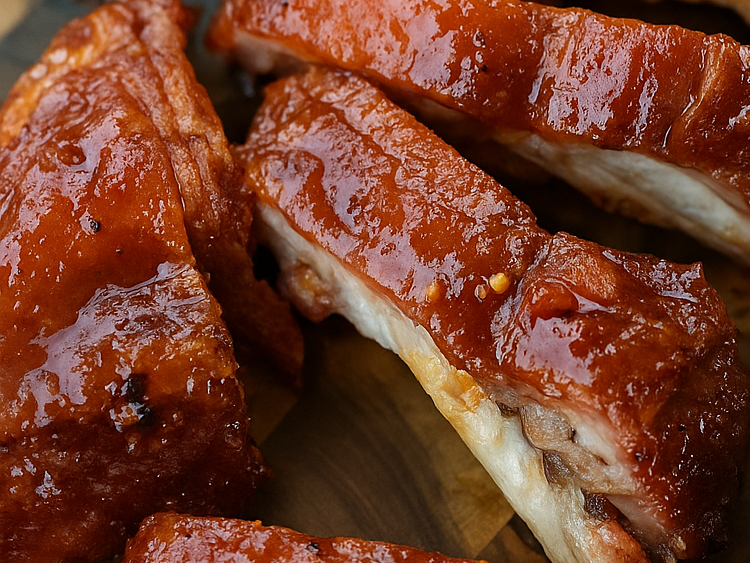When I fired up my first pellet grill five years ago, I was immediately struck by how it transformed ordinary chicken into something extraordinary. The consistent temperature control, the natural wood-fired flavor, and the set-it-and-forget-it convenience changed my grilling game forever. If you’re looking to master chicken on your pellet grill, you’ve come to the right place.

Pellet grills have revolutionized outdoor cooking for many Americans, combining the flavor benefits of traditional smoking with the convenience of modern technology. Unlike conventional grills, pellet grills use compressed wood pellets as fuel, offering consistent temperatures and infusing your food with authentic wood-fired flavor.
In this comprehensive guide, we’ll explore everything you need to know about cooking chicken on a pellet grill – from equipment and preparation to execution and troubleshooting. Whether you’re a pellet grill novice or looking to refine your technique, these tips and recipes will help you achieve perfectly juicy, flavor-packed chicken every time.
Why Pellet Grills Make Perfect Chicken
Pellet grills excel at cooking chicken for several scientific reasons:
- Temperature consistency – Pellet grills maintain precise temperatures within ±5°F, eliminating the hot and cold spots that plague traditional grills. This consistency is crucial for chicken, which needs to reach a safe internal temperature without drying out.
- Indirect heat cooking – Most pellet grills primarily cook with indirect heat, which gently cooks chicken from all sides, resulting in more even cooking and less moisture loss.
- Automated wood-fired flavor – The automated feed system consistently supplies wood pellets to the fire pot, creating clean smoke that penetrates the chicken with complex flavor compounds.
- Versatility – Pellet grills can smoke low and slow or crank up the heat for a perfect sear, giving you multiple cooking options for different chicken cuts and recipes.
In testing dozens of chicken recipes on my Traeger, Pit Boss, and Camp Chef grills, I’ve found that pellet grills consistently produce juicier, more flavorful chicken than traditional gas or charcoal grills when used correctly.
Essential Equipment
Beyond the pellet grill itself, these tools will elevate your chicken-cooking experience:
- Reliable meat thermometer – I recommend the ThermoPro TP19 or a Thermoworks Thermapen for instant readings to ensure your chicken reaches 165°F without overcooking
- Heavy-duty tongs – Look for 16-inch tongs with silicone or heat-resistant tips
- Drip pan – Aluminum foil pans catch drips, prevent flare-ups, and can collect valuable juices
- Spray bottle – For applying apple juice, vinegar, or other moistening spritz during longer cooks
- Grill grates – Consider GrillGrates or cast iron grates for better searing capability
- Brine container – A large food-safe container for brining whole chickens
Having the right tools ready before you start will make the entire process more efficient and help you achieve better results.
Best Wood Pellets for Chicken
The wood pellets you choose significantly impact your chicken’s final flavor profile. After extensive testing, these are my recommendations:
- Apple wood pellets – My go-to for chicken, providing a mild, slightly sweet flavor that complements without overpowering
- Cherry wood pellets – Offers a subtle fruitiness and attractive color
- Maple wood pellets – Imparts a mild sweetness that works well with most chicken recipes
- Competition blend – Typically a mix of maple, hickory, and cherry for a balanced profile
- Hickory or mesquite – Use sparingly or in blends as they can overpower chicken’s delicate flavor
For the best results, avoid pellets with fillers or oils. Premium brands like Traeger, Bear Mountain, and Lumber Jack produce consistent, high-quality pellets that burn cleaner and produce better flavor.
Preparing Your Chicken
Preparation makes the difference between good and great pellet-grilled chicken:
Choosing the Right Chicken
- Whole chickens – Look for 4-5 pound birds for optimal cooking
- Bone-in pieces – Retain more moisture and flavor than boneless
- Skin-on – The skin creates a natural barrier that helps retain moisture
- Air-chilled – These chickens have better texture and flavor than water-chilled alternatives
- Organic/free-range – Often provide improved flavor, though at a higher price point
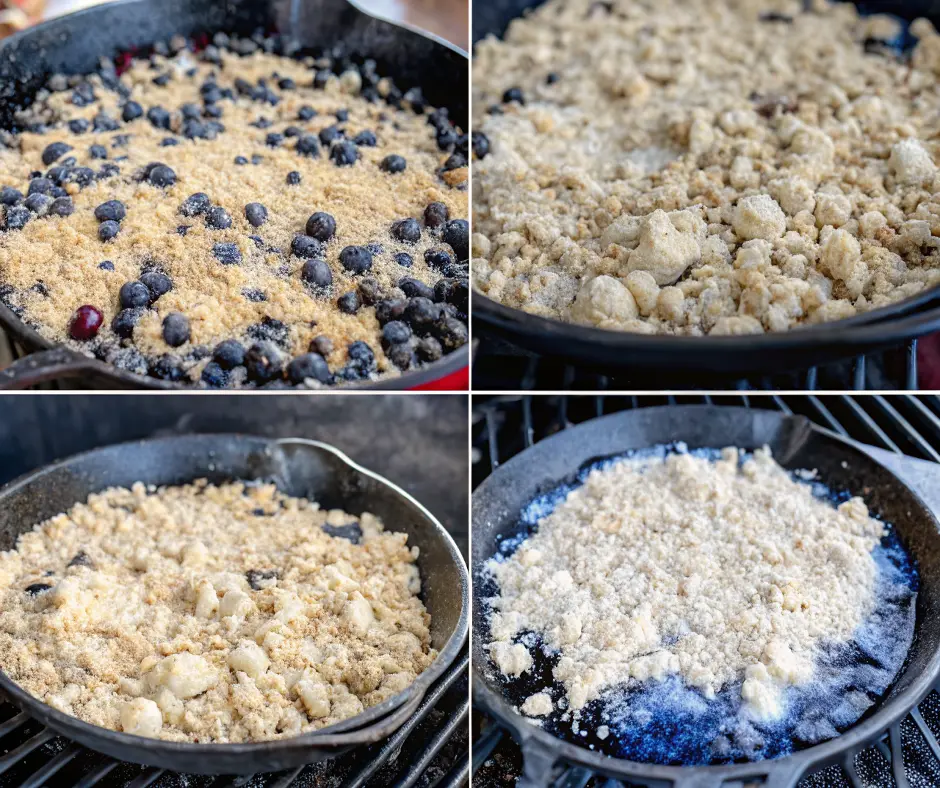
Brining: The Secret to Juicy Chicken
Brining is non-negotiable for truly spectacular pellet-grilled chicken. Here’s my go-to brine recipe:
- 1 gallon cold water
- ¾ cup kosher salt
- ½ cup granulated sugar
- 2 tablespoons black peppercorns
- 4 bay leaves
- 4 garlic cloves, crushed
- 1 lemon, sliced
- Optional: 2 tablespoons of your favorite rub
Brining Times:
- Whole chicken: 6-12 hours
- Bone-in pieces: 2-4 hours
- Boneless pieces: 1-2 hours
After brining, rinse thoroughly under cold water and pat completely dry with paper towels.
Dry Rubs and Marinades
For dry rubs, apply a thin layer of olive oil or yellow mustard first to help the rub adhere. My signature chicken rub combines:
- 3 tablespoons brown sugar
- 2 tablespoons paprika
- 1 tablespoon garlic powder
- 1 tablespoon onion powder
- 1 tablespoon dried thyme
- 2 teaspoons black pepper
- 1 teaspoon cayenne pepper (adjust to taste)
- 1 teaspoon salt (use less if you’ve brined)
For marinades, a minimum of 4 hours delivers good flavor penetration, but overnight (8-12 hours) yields the best results.
The Ultimate Pellet Grill Chicken Recipe
After testing dozens of methods, this recipe consistently delivers the juiciest, most flavorful chicken from your pellet grill.
Perfect Pellet Grill Whole Chicken
Ingredients:
- 1 whole chicken (4-5 pounds)
- 2 tablespoons olive oil or melted butter
- 3-4 tablespoons chicken rub (recipe above)
- 1 lemon, quartered
- 4 garlic cloves, lightly crushed
- Few sprigs of fresh thyme and rosemary
Instructions:
- Prepare the chicken:
- Brine the chicken for 6-12 hours using the recipe above
- Remove from brine, rinse thoroughly, and pat completely dry
- Allow to air dry in the refrigerator for 1-2 hours for crisper skin
- Stuff cavity with lemon, garlic, and herbs
- Brush exterior with olive oil or melted butter
- Apply rub generously, including under the skin where possible
- Prepare your pellet grill:
- Clean grill grates and empty the ash pot
- Fill hopper with apple or cherry wood pellets
- Preheat to 350°F for 15 minutes
- Cook the chicken:
- Place chicken breast-side up directly on the grill grates
- Insert a temperature probe into the thickest part of the thigh without touching bone
- Cook until internal temperature reaches 160°F (about 75-90 minutes for a 5-pound bird)
- For extra-crispy skin, increase grill temperature to 425°F for the final 10 minutes
- Rest and serve:
- Remove chicken when thigh meat reaches 160°F (it will continue cooking to 165°F)
- Tent loosely with foil and rest for 15-20 minutes
- Carve and serve immediately
Cooking times will vary based on chicken size, starting temperature, and grill model. Always cook to temperature, not time.
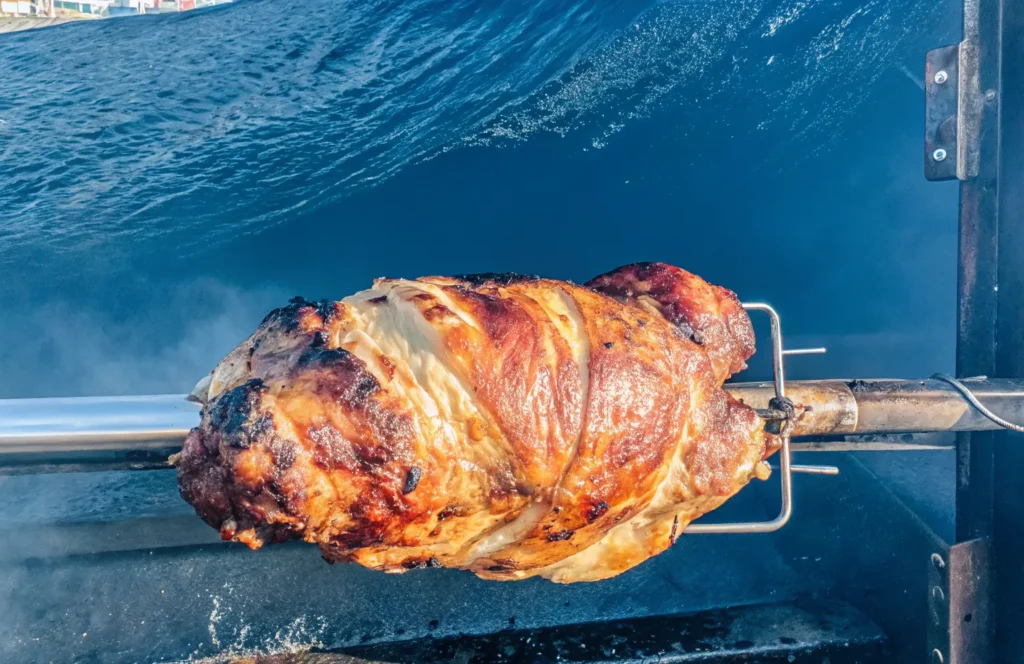
Perfect Pellet Grilled Chicken Thighs
Ingredients:
- 8 bone-in, skin-on chicken thighs
- 2 tablespoons olive oil
- 3 tablespoons chicken rub (recipe above)
Instructions:
- Prepare the thighs:
- Brine for 2-4 hours
- Pat completely dry and trim excess skin/fat
- Brush with olive oil and apply rub liberally
- Prepare your pellet grill:
- Preheat to 275°F with apple or maple pellets
- Cook the thighs:
- Place thighs skin side up on the grill
- Smoke at 275°F for 45 minutes
- Increase temperature to 425°F and cook for an additional 15-20 minutes or until internal temperature reaches 175°F and skin is crispy
- For extra flavor, brush with your favorite BBQ sauce during the last 5 minutes
- Rest and serve:
- Rest for 5-10 minutes before serving
Higher finishing temperatures (175°F rather than 165°F) break down connective tissue in thighs, resulting in a better texture.
Advanced Techniques
Once you’ve mastered basic chicken recipes, try these advanced techniques:
Spatchcocking (Butterflying)
Spatchcocking involves removing the backbone and flattening the chicken:
- Use kitchen shears to cut along both sides of the backbone
- Remove backbone and reserve for stock
- Flip chicken breast-side up and press firmly on breastbone to flatten
- Tuck wing tips behind breasts to prevent burning
Benefits:
- Reduces cooking time by approximately 30%
- Ensures more even cooking
- Creates more surface area for smoke penetration and rub application
Cook spatchcocked chickens at 350°F until breast meat reaches 160°F (about 50-65 minutes).
Beer Can Chicken
While somewhat controversial among purists, beer can chicken can produce juicy results:
- Open a can of beer and drink (or pour out) about half
- Add additional seasonings to the beer if desired
- Place the chicken cavity over the beer can so it stands upright
- Balance carefully on the grill and cook at 350°F until done
The debate continues whether the beer actually steams/flavors the chicken from within, but the vertical roasting position does allow fat to drip away while cooking evenly.
Two-Zone Cooking for Chicken Parts
For the perfect combination of smoke flavor and crispy skin:
- Set up your pellet grill for indirect cooking at 225°F
- Smoke chicken parts for 45 minutes to an hour
- Increase grill temperature to 425°F to crisp the skin
- Cook until proper internal temperature is reached
This technique works particularly well for chicken quarters and bone-in breasts.
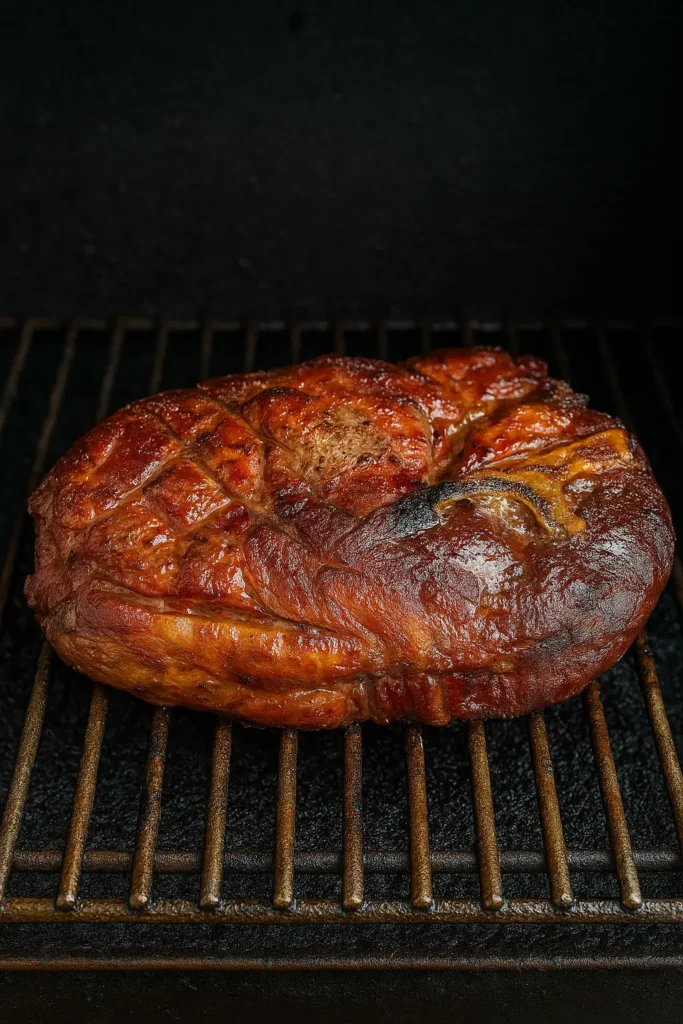
Troubleshooting Common Issues
Problem: Rubbery Skin
Causes:
- Insufficient heat
- Too much moisture
- Not enough time at high temperature
Solutions:
- Pat chicken completely dry before cooking
- Apply a thin coating of oil to help crisp the skin
- Finish at high temperature (400°F+) for the last 10-15 minutes
- Consider air-drying the chicken in the refrigerator for 2-4 hours after brining
Problem: Dry Chicken Breast
Causes:
- Overcooking
- Cooking at too high a temperature
- Not brining
- Uneven thickness
Solutions:
- Always use a meat thermometer and cook to 160°F (carryover will reach 165°F)
- Consider brining for at least 4 hours
- Butterfly thick breasts for more even cooking
- Use a two-zone cooking method for larger pieces
Problem: Insufficient Smoke Flavor
Causes:
- Cooking at too high a temperature
- Not enough time at smoking temperatures
- Using mild wood pellets
Solutions:
- Start with 30-45 minutes at a lower temperature (180-225°F)
- Use stronger-flavored pellets or a blend with some hickory
- Consider adding a smoke tube for additional smoke production
Other Foods Perfect for Pellet Grills
While chicken is fantastic on a pellet grill, these foods also excel:
- Pork Shoulder – The long, slow cook time and consistent temperature make pellet grills perfect for pulled pork
- Beef Brisket – Perhaps the ultimate test of a pellet grill’s capability
- Ribs – Both beef and pork ribs thrive with the consistent heat and smoke
- Turkey – Similar to chicken but requiring more time and temperature management
- Salmon – The gentle heat preserves the delicate texture while adding smoke flavor
- Whole Vegetables – Bell peppers, onions, and corn take on amazing flavor
- Pizzas – At higher temperatures with a pizza stone
- Artisan Breads – Create bakery-quality bread with a smoky twist
The versatility of pellet grills makes them ideal for experimenting beyond traditional barbecue fare.
Pellet Grill Mistakes to Avoid
Through years of testing and numerous failures, I’ve identified these common mistakes:
- Not preheating adequately – Allow 15-20 minutes to properly preheat
- Opening the lid too frequently – Each peek can extend cooking time by 5-10 minutes
- Not cleaning the firepot regularly – Ash buildup can cause temperature fluctuations
- Ignoring weather conditions – Wind and cold significantly impact performance
- Using low-quality pellets – They create more ash, less heat, and inferior flavor
- Relying on the built-in temperature gauge – Often inaccurate by 25°F or more
- Running out of pellets mid-cook – Always start with more than you think you need
- Placing food directly above the firepot – Creates an unwanted hot spot
- Not adjusting recipes for your specific grill – Each model has unique characteristics
- Neglecting to clean grease traps – Can cause dangerous flare-ups
Avoiding these mistakes will significantly improve your results and extend the life of your grill.
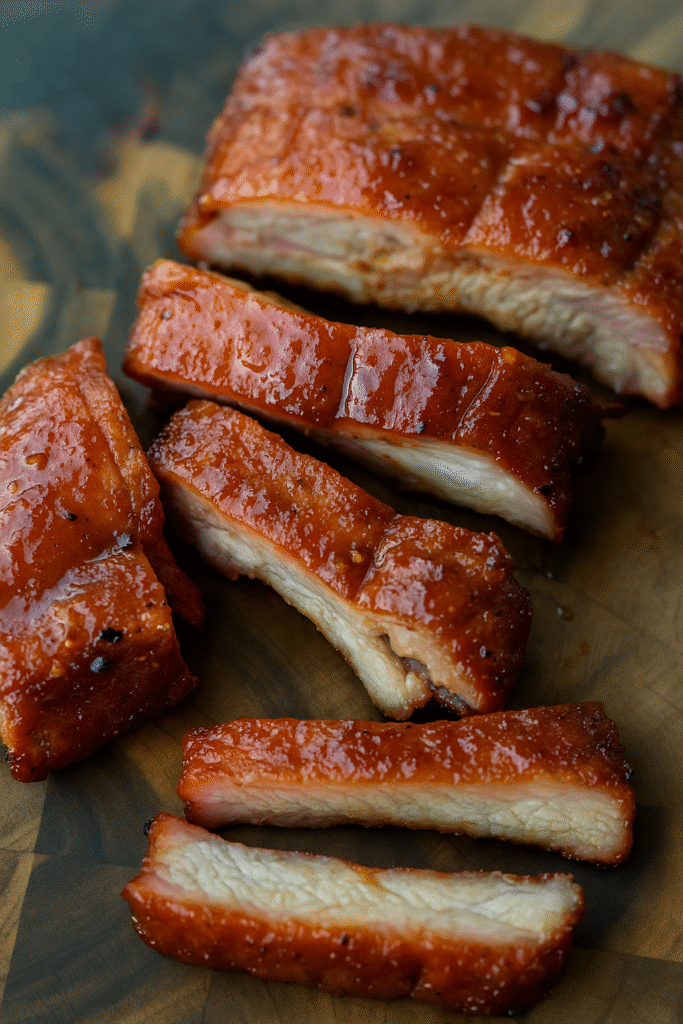
What to Cook First on Your Pellet Grill
For newcomers to pellet grilling, I recommend starting with:
- Chicken thighs – Forgiving due to higher fat content, quick-cooking, and economical
- Pork tenderloin – Cooks relatively quickly and benefits greatly from smoke flavor
- Thick-cut pork chops – More forgiving than beef steaks for beginners
- Meatloaf – Absorbs smoke beautifully and is difficult to overcook
- Chicken wings – Great for learning temperature control techniques
These options build confidence before attempting more challenging cuts like brisket or prime rib.
Potential Downsides of Pellet Grills
While pellet grills excel at cooking chicken, it’s worth acknowledging their limitations:
- Electricity requirement – Most models need a standard outlet to operate
- Limited extreme high-heat searing – Many struggle to exceed 500°F
- Pellet costs – Premium pellets can be expensive compared to charcoal or gas
- Weather sensitivity – Performance can suffer in extreme cold or wind
- Moving parts mean potential failures – More complexity than traditional grills
- Less intense smoke flavor – Compared to offset smokers or charcoal with wood chunks
- Startup time – Most require 15-20 minutes to reach cooking temperature
Understanding these limitations helps set realistic expectations for your pellet grill cooking experience.
Frequently Asked Questions
Q: Should I marinate chicken before cooking on a pellet grill? A: Marinating can add flavor, but be careful with acidic marinades as they can toughen the meat if left too long. For best results, marinate for 4-12 hours and pat dry before cooking to help with browning.
Q: Can I cook frozen chicken on a pellet grill? A: While possible, it’s not recommended. Frozen chicken cooks unevenly and can spend too long in the temperature danger zone. Always thaw completely before cooking for best results and food safety.
Q: How do I prevent flare-ups when grilling chicken? A: Pellet grills generally have fewer flare-ups than traditional grills, but trimming excess fat, using drip pans, and keeping the grill clean will minimize any issues.
Q: What’s the best way to check if chicken is done? A: Always use a reliable instant-read thermometer inserted into the thickest part without touching bone. Chicken breasts and whole birds should reach 160°F before resting (they’ll hit 165°F while resting), while thighs and legs are better at 175°F for optimal texture.
Q: How can I get crispier skin on my chicken? A: Pat the skin completely dry, air-dry in the refrigerator for 1-2 hours after brining, apply a thin layer of oil or butter, and finish cooking at a higher temperature (400-450°F).
Conclusion
Mastering chicken on a pellet grill combines science, technique, and a bit of patience. The journey from novice to expert involves understanding your specific grill, recognizing quality ingredients, and developing a feel for timing and temperature.
The beauty of pellet-grilled chicken lies in its accessibility – even beginners can achieve impressive results their first time out, while seasoned grillers can continue refining their techniques for ever-more-spectacular results.
Whether you’re cooking a simple weeknight dinner of chicken thighs or preparing a holiday feast with a perfectly smoked whole bird, your pellet grill provides the consistent heat and flavorful smoke that elevates chicken from ordinary to extraordinary. With the techniques outlined in this guide, you’re well-equipped to create mouth-watering pellet grill chicken that will impress family and friends alike.
Remember, great pellet grill chicken isn’t just about following recipes – it’s about understanding the principles behind temperature control, smoke production, and chicken preparation. Experiment, learn from each cook, and most importantly, enjoy the process. Your perfect pellet-grilled chicken is just a cook away!
Print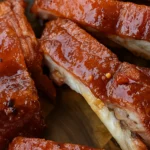
How to Cook Perfect Chicken on a Pellet Grill: The Ultimate Guide
- Total Time: 1 hour 50 minutes
- Yield: 4–6 servings 1x
Description
This ultimate pellet grill chicken guide will help you cook perfectly juicy, smoky chicken every time using proven techniques and flavorful wood pellets.
Ingredients
- 1 whole chicken (4–5 pounds)
- 2 tablespoons olive oil or melted butter
- 3–4 tablespoons chicken rub
- 1 lemon, quartered
- 4 garlic cloves, lightly crushed
- Fresh thyme and rosemary sprigs
Instructions
- Brine chicken for 6-12 hours, rinse thoroughly, and pat dry
- Air dry in fridge 1-2 hours for crispier skin
- Stuff cavity with lemon, garlic, and herbs
- Brush chicken with olive oil or melted butter
- Apply chicken rub generously, including under the skin
- Preheat pellet grill to 350°F with apple or cherry wood pellets
- Place chicken breast-side up on grates
- Insert probe into thickest part of the thigh
- Cook until internal temp reaches 160°F (75–90 minutes)
- Increase grill temp to 425°F for final 10 minutes for crispy skin
- Remove at 160°F, tent with foil, rest 15–20 minutes before carving
Notes
Brining and air-drying are key to juicy meat and crispy skin. Always cook by temperature using a reliable meat thermometer.
- Prep Time: 20 minutes
- Cook Time: 90 minutes
- Category: Main Course
- Method: Pellet Grill
- Cuisine: American BBQ
Nutrition
- Serving Size: 1 portion
- Calories: 510
- Sugar: 1g
- Sodium: 780mg
- Fat: 31g
- Saturated Fat: 9g
- Unsaturated Fat: 19g
- Trans Fat: 0g
- Carbohydrates: 3g
- Fiber: 0g
- Protein: 45g
- Cholesterol: 140mg

